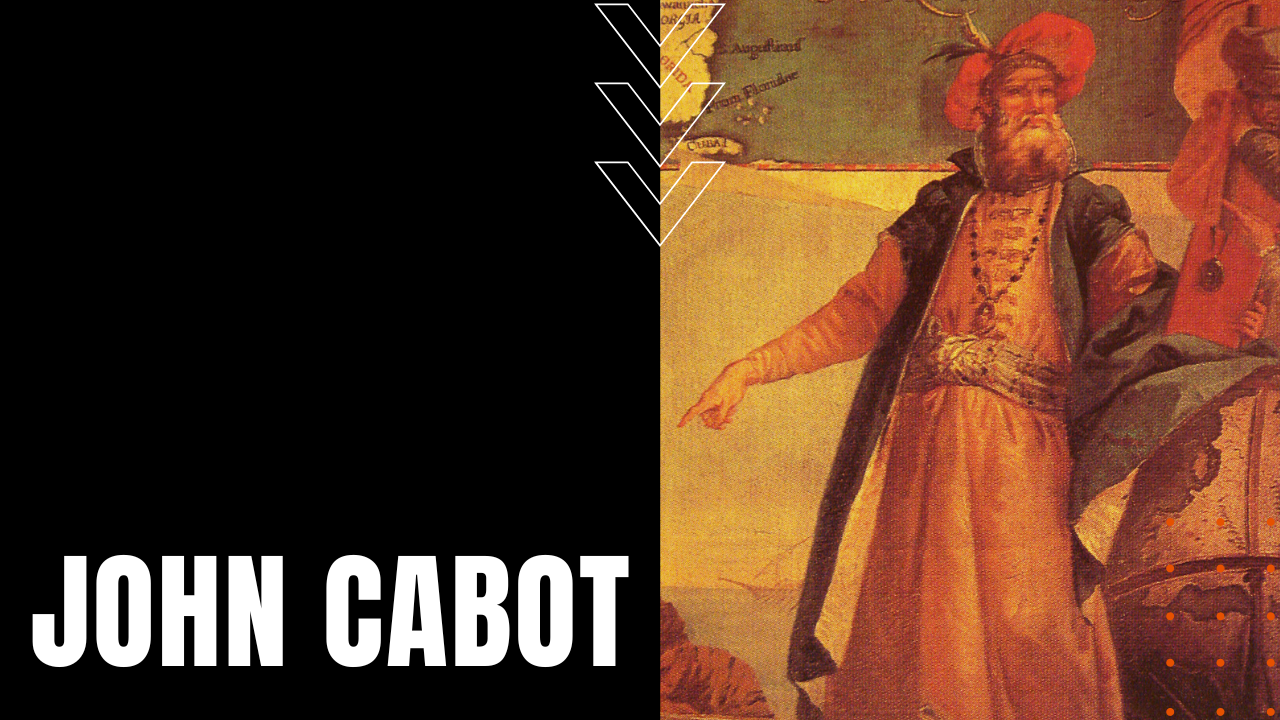John Cabot

Born Giovanni Caboto in 1450 Genoa, John Cabot moved to Venice as a young man where he worked the spice trade in the Levant or eastern Mediterranean. Studying navigation and map-making during his merchant years, like his contemporary Christopher Columbus, Cabot became interested in the possibility of reaching the rich markets of Asia by sailing in a westerly direction.
Heavily Indebted
Moving to Valencia and later Seville—possibly due to outstanding debts—Cabot worked as a maritime engineer with varying degrees of success, moving to the British port city of Bristol in late 1495, where in worked tirelessly to convince the British crown that a shorter route to Asia was possible by sailing a more northerly heading than the one Columbus had taken. After King Henry VII issued letters patent to Cabot and his son in 1496, Cabot set sail on a small Caravelle named Matthew in May of 1497 with a crew of 18, following an aborted first attempt in 1496.
Landfall!
Making landfall in North America on June 24th—the first European to do so since Leif Erickson’s 11th century landfall. While the exact location of Cabot’s explorations have been disputed—many pointing to southern Labrador, the island of Newfoundland or Cape Breton Island—Cabot was the first to hoist both the English and Venetian flags on North American soil.
Asia?
Believing he had reached Asia’s northeast coast, Cabot explored the region now known as the Cabot Strait, naming such points of interest as Cape Discovery, the island of St. John and the Grand Banks off the east coast of Canada, where his crew caught an abundance of cod fish by simply dipping baskets into the water.
Second Expedition
After his return to England in late 1497, Cabot set sail on a second expedition in February of 1498—this time with five ships and 300 men—with plans to continue westward past his original landfalls, with an expectation of reaching Japan. While one Caravelle was forced to land in Ireland due to storm damage, most historians believe that Cabot and his remaining crew perished in a severe storm.
Much Debate
While some evidence suggests that Cabot and his crew may have lived out their lives in North America, other documents suggest that he and his crew quietly returned to England amongst precious little fanfare. What is known is that Cabot’s proof of a shorter route to the New World was the spark of discovery behind Britain’s future land claims in Canada, as well as the establishment of Britain’s thirteen colony’s in North America, making John Cabot, an influential figure during the Age of Exploration.
